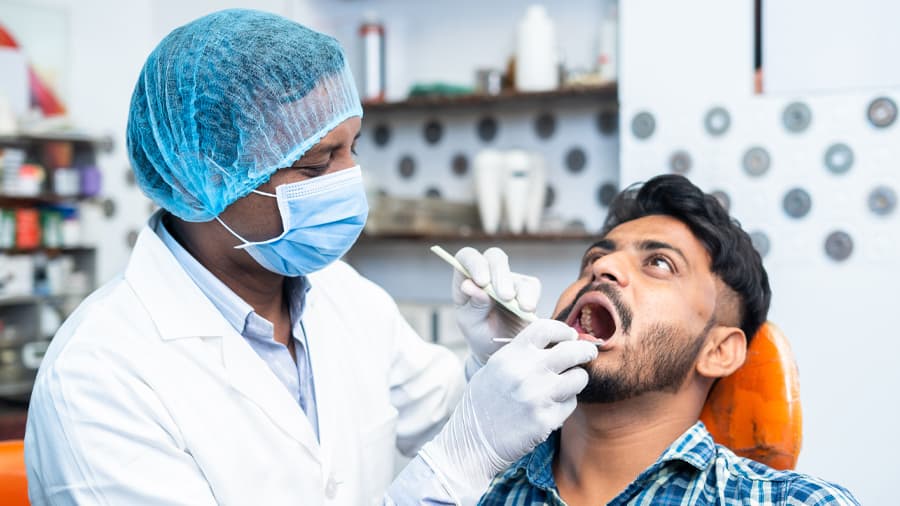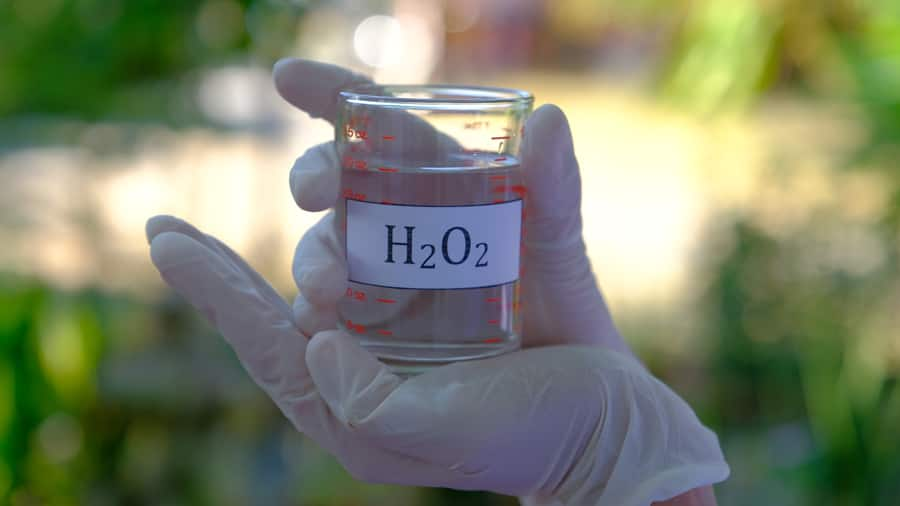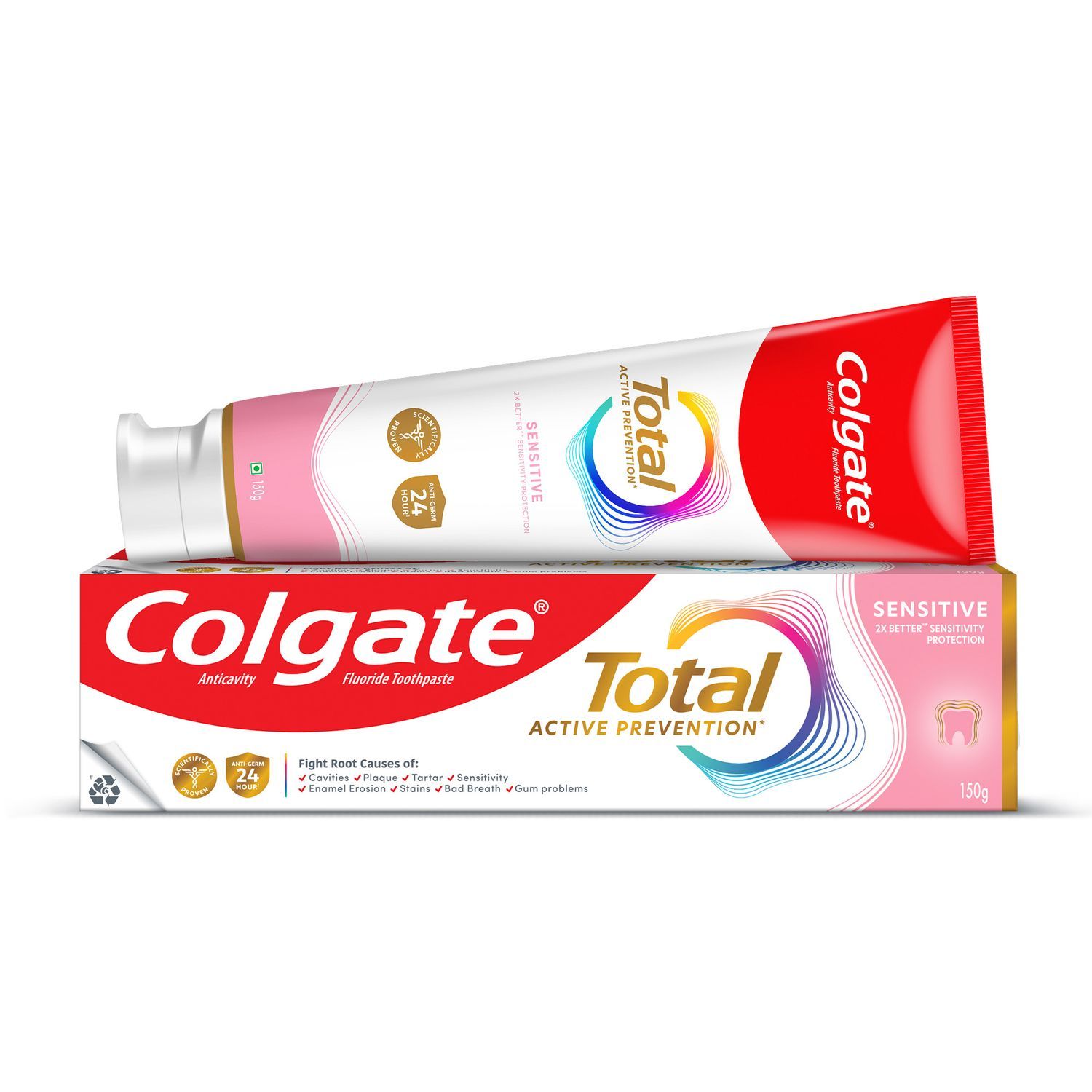Let us delve into understanding gingivitis and its causes and symptoms. Besides exploring ways to tackle and treat it, let us discover measures to prevent it and retain a healthy smile.
What is Gingivitis?
Gingivitis is medically classified as inflammation and infection of the gums. It is an early form of gum disease that affects the soft, supporting tissues that hold teeth in place. A survey conducted by the Dental Council of India notes that around 41.1% of Indians in the 35-45 age group have gum disease. Prompt diagnosis and treatment prevent it from progressing into periodontitis and causing more severe implications, such as tooth loss.
Gingivitis occurs due to the build-up of plaque - a soft, colourless, sticky film of bacteria and food particles on the teeth and along the gumline. Left uncleaned, it hardens to tartar, causing gum irritation and inflammation. Bacteria multiply in these accumulations, releasing toxins that make the gums swollen, red, and tender with the body’s natural inflammatory response.
Symptoms of Gingivitis?
Gingivitis symptoms are usually easy to identify as they are mostly noticeable. However, regular dental check-ups and cleanings with a dentist help you preempt the possibility, even if symptoms are not evident. Once the effects become perceptible, you may experience the following symptoms:
Swollen or soft, puffy gums
Receding gums
Occasionally, tender gums
Gums that bleed when flossing or brushing
A change in gum colour from pink to red
Persistent bad taste in your mouth
Persistent bad breath
If you notice any irregularities or sensitivity in your gums, it is ideal not to wait until your next check-up and instead make an appointment with your dentist without further ado.
Causes And Risk Factors of Gingivitis
The primary cause of gingivitis is poor oral hygiene, which leads to plaque and tartar build-up that harbours infection-causing bacteria. If not treated promptly, gingivitis causes further implications, such as dry mouth, gum tissue, and jaw bone damage, leading to tooth loss. Research shows that there are other risk factors for the development of gingivitis, and they include:
Lifestyle choices: Certain lifestyle factors, such as smoking and chewing tobacco, an unhealthy diet, stress, and obesity, can increase the risk of getting gingivitis.
Age: The Dental Council of India survey shows that around 79.3% of Indians in the 65-74 age group have periodontal disease, characterised by bleeding, tartar (calculus), or deep pockets (the gap between the teeth and gums).
Medications: Certain medications can have adverse effects on gum health. For instance, gingival overgrowth or gingival enlargement may occur as an unwanted effect of certain medications used to treat non-dental diseases. It is ideal to speak to a medical professional about any potential side effects your medicine could have.
Diseases or medical conditions: Some diseases and medical conditions can make you more susceptible to gum problems. They include systemic diseases like diabetes and cardiovascular diseases, osteoporosis, hormonal changes in women, pregnancy complications, and genetics.
How to Fight Gingivitis With Proper Tooth Brushing Technique
Proper oral hygiene is the best way to have healthy, disease-free gums. Brushing is an inevitable part of daily oral care, as it gets your teeth and gums rid of food debris, harmful bacteria, and plaque that cause gingivitis. Brushing also helps protect your mouth from other oral problems, such as tooth decay, cavities and bad breath.
Besides gingivitis treatment, empowering your dental care regimen by brushing twice daily is crucial to prevent gingivitis from recurring. If regular brushing is already part of your routine, use the correct toothbrushing technique. Ideally, use a soft-bristled toothbrush and apply the right amount of pressure to care for your healing gums gently.
How Does Flossing Help Reverse Gingivitis?
The Indian Dental Association points out that proper and regular tooth brushing and flossing habits can reverse the effects of gingivitis. Flossing cleans food particles and plaque from areas the toothbrush cannot reach. Hence, flossing is equally important in dental health care as brushing to combat gum problems and other dental issues.
Ideally, you may use dental floss once daily to clean between your teeth and under your gumline. It removes irritants like bacteria and food debris and helps reduce gum inflammation. You may also consider using a water flosser or an interdental brush instead.
Are There Home Remedies For Gingivitis?
When searching for how to cure gingivitis or a gingivitis home remedy, you may have seen studies showing the beneficial properties of herbs such as turmeric and sage for your gums. Salt water rinse is another classic method many people consider using to reduce gum inflammation. However, it is essential to understand that these methods do not address the root cause of the problem and are not a substitute for professional dental care.
To prevent gum disease from progressing further, it is ideal to visit a dental hygienist for proper gingivitis treatment. You may also use a dentist-recommended antibacterial mouthwash to help treat the bacterial infection in the mouth.
Salt Water Rinse
Due to antibacterial properties, salt or sodium chloride (NaCl) has been used as a remedy for several oral problems. Mixing a teaspoon of salt in a cup of warm water is considered for rinsing the mouth. It helps curb bacterial growth, prevent potential gum diseases, and soothe gum inflammation for temporary relief.
Clove Oil
Clove oil contains eugenol, a natural anaesthetic with anti-inflammatory properties. It has also been used as a potent pain reliever to treat bleeding gums and periodontitis. Many people claim temporary relief from gum swelling and pain by applying a cotton ball dipped in clove oil to the affected gums.
Cold Compress
Cold compresses are a common hack for temporary relief from gum pain and discomfort. They involve applying an ice pack or cold compress to the cheeks near the affected gums. The compress constricts the blood vessels and numbs the area, reducing gum swelling and inflammation.
Professional Treatment
Regular dental check-ups are vital for the timely diagnosis and treatment of gingivitis, even if there are no signs. If you are experiencing any symptoms, booking an appointment with your dentist without delay is ideal rather than trying out any gingivitis home remedy. In dentistry, gingivitis treatment involves a thorough cleaning to remove plaque from the surfaces of your teeth and under your gum line.
If the plaque has calcified into tartar, a more advanced technique called scaling and root planing may be used. For more severe cases, dentists may use a dental probe to measure any pockets that develop at the gumline to see if the condition progresses towards periodontitis. Besides cleaning your teeth, your dentist examines your mouth for any other abnormalities and makes recommendations that help you clean your gums and teeth easily at home.
How To Prevent Gingivitis
Adopting good oral hygiene practices can be the first step to retaining your gums and teeth in good health. Addressing the other possible risk factors is also significant in gingivitis prevention. The various preventive measures that you can use include:
Practice good dental hygiene: Brush twice daily, preferably using a soft-bristled toothbrush and the proper brushing technique. Floss once every day. You may use an antibacterial toothpaste to enhance your defence against gum problems. For example, the Colgate Total Advanced Health toothpaste has an antibacterial formula that offers 12-hour-long protection from germs for your gums, teeth, and entire mouth.
Ensure regular dental checkups: If you have gingivitis symptoms, visiting your dentist helps rule it out and prevents it from advancing further. Regular dental checkups and professional cleanings make you resistant to gum diseases and other oral issues. Your dentist may suggest antibacterial mouth rinses, replacing dental and orthodontic appliances, and correcting misaligned teeth as part of prevention and enhanced oral care.
Enhance your lifestyle and healthcare: Tackling the other risk factors early on is another vital step in preventing gingivitis. Lifestyle corrections like quitting smoking and tobacco and switching to a healthy, nutritious diet can help. Addressing your health conditions and treating systemic diseases such as diabetes help reduce your risk of gingivitis and other gum problems.
Gingivitis is the inflammation and infection of gums that is easily treatable. However, neglecting it can lead to serious consequences. You can prevent gingivitis by prioritizing good oral hygiene with proper brushing, flossing, and regular dental check-ups. If you notice any gingivitis symptoms, visit your dentist immediately. With a proactive approach, early detection and prevention, you can keep your gums healthy and flaunt a worry-free smile.
Frequently Asked Questions
What is gingivitis?
Gingivitis is the inflammation of the gums (gingiva), the soft tissues holding teeth in place. It is an early form of gum disease that results from untreated plaque and bacterial build-up in the mouth. Detecting and treating gingivitis in the early stages helps prevent it from advancing to more serious periodontal disease and causing further implications.
What is the main cause of gingivitis?
Poor oral hygiene is the most common cause of gingivitis, which leads to dental plaque and tartar buildup on the teeth and along the gum line. This buildup houses infection-causing bacteria that irritate and inflame the gums. If left untreated, gingivitis causes further damage to gum tissues and jaw bone, leading to serious implications such as bone loss and loose teeth.
What 3 symptoms are present with gingivitis?
Though gingivitis symptoms do not include pain, three evident symptoms are swollen and red gum tissues, bleeding gums, especially during brushing or flossing, and persistent bad breath. If you notice any of these, visit your dentist to treat gingivitis promptly before it progresses into a more serious gum disease.
How to cure gingivitis quickly?
Gingivitis treatment with a dentist could be the quickest path to cure. A dentist can perform a deep cleaning to remove built-up plaque and tartar responsible for inflammation and infection. Following this with proper brushing and flossing at home helps cure gingivitis effectively and restores optimal oral health.
This article is intended to promote understanding of and knowledge about general oral health topics. It is not intended to be a substitute for professional advice, diagnosis or treatment. Always seek the advice of your dentist or other qualified healthcare provider with any questions you may have regarding a medical condition or treatment.
ORAL HEALTH QUIZ
What's behind your smile?
Take our Oral Health assessment to get the most from your oral care routine
ORAL HEALTH QUIZ
What's behind your smile?
Take our Oral Health assessment to get the most from your oral care routine













